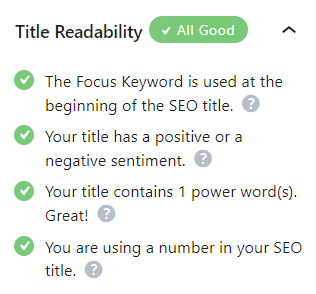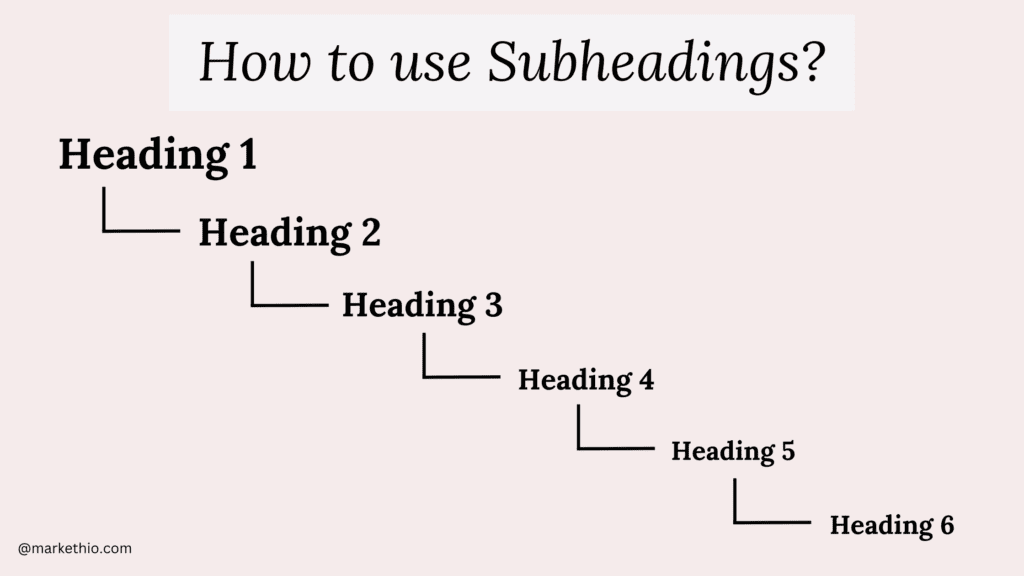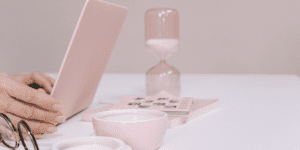
It’s time to write a blog post!
But but wait…
How are you planning to do that? Because here’s the thing:
We have more things to consider here because writing a blog post for your website is very different from writing something in Google Docs or Microsoft Word.
You can’t just write a few paragraphs, pop in some headings here and there, and call it a day. No. It doesn’t work like that.
You have to do more than that. You need to learn how to structure a blog post.
Whether you are writing a blog post for your site, writing a guest post, or doing some freelance content writing for someone else’s website, you have to create a well-structured blog post.
Let me tell you how I used to write blog posts when I was a complete newbie 😁
I used to have a blog way before this one, where I used to do anything. That blog had no niche, I was writing on random topics, and the site design was just whatever.
It was just a big old mess!
I was clueless, to be honest. I didn’t know what I was doing and was just winging everything for the sake of uploading a blog post every week.
I used to choose a topic without doing any research about it and just start writing like a school essay.
I still remember writing a blog post on the topic ‘Is book reading a healthy habit?’. I wrote huge chunks of paragraphs with no headings (I just used to change the font size to make it look like a heading 🙁) and then published.
DON’T BE LIKE ME! PLEASE!!
I was just a beginner who was figuring stuff out about blog writing, as this was not one of my main skills as a marketer.
After writing at least 10–15 blog posts, I thought this was not it. I have to work on my blog writing skills.
Then I studied and gained knowledge about content writing and what to do to make Google love it.
After so much practice, this is where I am today! I have so many of my blog posts ranking on the first page of Google too!
So, I thought, why not teach you everything I’ve learned so far on how to structure a blog post that both search engines and humans will love?
Let’s jump straight to the post!
Some links in this post are affiliate links. If you purchase through these links, I earn a commission at no extra cost to you. I only recommend products, tools and services that I trust. For more information, read the full disclosure here.

WHY STRUCTURE YOUR BLOG POSTS?
Now you may be wondering, why is it so important to give a structure to your blog posts?
Well, there are many reasons for that. Take a look ↓

BETTER READABILITY
A well-structured blog post with clear headings, short paragraphs, and bullet points makes it easier for readers to navigate and read the blog post.
It’s important to maintain engagement, and if your blog post doesn’t offer good readability, then it would take readers only 2 seconds to click off the post.
Think about it yourself. Suppose you are a reader who is looking for a solution on the internet. You visit two different blog posts on the same topic.
One is well-structured with clear headings, easy-to-read paragraphs, a table of contents, and bullet points and the other one has no clear message and is difficult to scan through, with huge chunks of paragraphs and no readability whatsoever.
Which one would you like to read?
The first one!
See, it makes a huge difference!
FOR SEO OF YOUR POSTS
Google absolutely adores well-structured posts and let me elaborate why so.
In the latest Google algorithm updates, Google aims to provide the best answers to people whenever they search for a query.
Google can’t understand English, but it can understand and analyze a well-structured post that contains correctly used headings, bullet points, and more than 1000 words.
If your post is longer and well-structured, then the Google algorithm will think of it as ‘more informational to the readers’ and will make it rank higher on its search results.
And that’s our aim!
GOOD USER EXPERIENCE
Readers can easily navigate your blog posts if they are well-structured.
Adding clear headings, writing short paragraphs, and much more which we will discuss further, gives your reader a clear idea about your post.
They’ll have no confusion while reading them, enhancing user experience and engagement.
ENCOURAGES CTA
CTA stands for call-to-action, which means encouraging your readers to take action while reading your post. It can be signing up for your email list, buying a product, trying out a tool, or something else.
A clear and well-structured blog post encourages CTA which is important for the further growth of your blog.
FOR CONSISTENCY
If you follow some fellow bloggers, you can immediately recognize their posts by just looking at the style and structure.
That’s because they have maintained a consistency of their blog post structure and now the readers can easily recognize them at just a glance.
I think you get my point here 🙂
> Related: How to write a blog post that people will actually read
HOW TO STRUCTURE A BLOG POST IN 10 EASY STEPS
Now let’s discuss the topic which you’ve been waiting for.
In the blogging world, there’s a method to do everything with a proper technique. Today’s technique is, as you know, how to create well-structured blog posts so that the search engines work in your favor.
Let’s not chit-chat more and get straight to the point.
How to structure a blog post in 10 steps:
➤ Search for a topic
➤ Create a Good Title
➤ Write an engaging intro
➤ Add table of contents
➤ Create subheadings in the correct order
➤ Keep the paragraphs short
➤ Add a call to action
➤ Add images, videos, gifs etc
➤ Add a conclusion
➤ Add links
Let’s discuss each point in detail.
1- SEARCH FOR A TOPIC
The very first step is to find a topic to write a blog post on.
To do that, you’ll need to do some research and then proceed further with editing and writing your blog post.
First things first, you need to come up with a blog post idea. You can do the following things to find some ideas:
- Brainstorm some ideas
- Look at what your fellow bloggers are writing
- Research on quora
- Ask your audience
- Use Google autosuggest for some ideas
There are many more ways to find blog topic ideas. You also have to keep in mind to ensure that people are searching for that topic.
You can use a keyword research tool to find out how a keyword is performing on the search engines.
I personally adore the Google keyword planner to do keyword research for blog posts. It shows very accurate data about a keyword and also suggests related keywords too.
If you want to learn more about how to do keyword research and SEO, you can check out how to do SEO for your blog posts for beginners.
Just make sure that the keyword you choose has low competition and high search volume. Like this ↓

Do keyword research and finalize the topic on which you want to write a blog post.
2- CREATE A GOOD TITLE
Your blog post title is the very first thing people would notice while looking for a solution. So you have to make sure that you create titles that the readers cannot resist clicking on.
An SEO plugin would help with that. How?
Take a look at this image ↓

I use the RankMath SEO plugin for my site and the plugin shows a ‘Title Readability’ score for each post. If you see all the green tick marks in this section then your blog post title is great!
You have to keep all of the four points in your mind while creating a blog post title. Positive/negative sentiment words, power words, a number, and the keyword. You have to include everything in your blog post title.
Here are some examples of Positive/Negative sentiments:
- Achievable, admirable
- Accurate, adorable
- Enjoyable, Excellent
- Fastest, Fascinating
- Incredible, irresistible
- Alarming, boring
- Challenging, drawbacks
There are many more. See the full list of the Positive and Negative Sentiments here.
Here are some examples of Power Words:
- New
- Free
- How to
- Efficient
- Convenient
- Profitable
- Ultimate
Learn more about Power words and how to use them here.
Another way is to Install the MonsterInsights plugin and use the Headline Analyzer they offer within the plugin.
It looks like this in the WordPress blog post editor ↓

The Headline Analyzer gives a score to your blog post title and upon clicking on it, it also tells you how you can improve it.
I absolutely love this addon and helps me so much in creating a good title for my posts.
Spend some time on the title of your posts and craft one that people can’t resist clicking on. Sometimes if the title of your post is not great then your blog post’s quality won’t matter that much.
3- WRITE AN ENGAGING INTRO
Write an intro that keeps the readers hooked. Your blog’s intro will be the first thing readers will read, so you have to make sure your readers keep reading more.
If your readers click off your blog posts because they don’t find them interesting, this will increase the bounce rate of your site.
An increase in the bounce rate of your blog is bad for SEO. Google will detect that readers are clicking off your blog and think of it as ‘non-helpful’ which may affect your rankings in the search result page.
To make your blog post intros interesting, you can do the following things:
- Ask a question
- State a fun fact or stats related to the post-topic
- Write your opinion
- Simply summarize your post
- Tell a personal story or experience
- Use emotions (happy or sad)
There are many more ways to create an intro to keep your readers hooked. You can approach whichever style suits that blog post the most.
> Related: How to write a blog post that people will want to read
4- ADD A TABLE OF CONTENTS
A table of contents is a table that contains all the headings (H2, H3, H4, H5, H6) from a blog post in one place so that readers can easily skim through the post.
Nowadays, the attention span of humans is getting shorter and shorter (55 seconds) and if they don’t find what they are looking for in your blog post within some seconds, then they’ll click off.
So, it’s a necessity to include a table of contents in your blog posts right after the intro so that the readers can easily jump to the section they are looking for.
You can use Plugins, and HTML code, or can add a table of contents manually too. Check out this post on how to add a Table of Contents in WordPress.
Don’t forget to customize the table of contents according to your branding to make it look beautiful!
5- CREATE AND USE THE SUB-HEADINGS IN THE CORRECT ORDER
A blog post must contain different hierarchies of subheadings to make them SEO friendly. These subheadings are called Heading 1, Heading 2, Heading 3, Heading 4, Heading 5, and Heading 6.
In short, they are called H1, H2, H3, H4, H5, and H6. No more than that.
Now, you must be wondering what do these subheadings mean and how do they work. Take a look at this image ↓

H1 is the title of your blog post.
H2 is the subheading of H1.
H3 is the subheading of H3.
H4 is the subheading of H3.
H5 is the subheading of H4.
H6 is the subheading of H5.
Here’s a visual representation of how to use them in your blog posts in the correct way ↓

This is the correct order to use the subheadings in your blog posts. From H1 to H6.
You should not use them in the wrong order such as H4 after H2 or H5 after H3. If you are using the H3 as subheading then the next subheading must be H4 and not H5 or H6. Did you get the point here?
The correct hierarchical order matters a lot to give a good structure to your blog post.
You can easily switch from Subheadings to Subheadings in the WordPress blog post editor like this:

6- KEEP THE PARAGRAPHS SHORT
Google adores easy-to-read blog posts because their priority is to give the readers the best search experience. So, your blog posts need to be well-written for both search engines and humans.
Here’s what you can do to improve the readability of your blog posts:
WRITE SHORT PARAGRAPHS
Yes! This is very important for the user experience and SEO optimization of your posts.
Try to write a maximum of two sentences or about 20-25 words in a single paragraph. That way your posts will look way cleaner.
Big chunky paragraphs are difficult to read and sometimes ugly to look at. Most people don’t prefer that. Prioritise the user experience of your blog and you’ll see the magic happen!
7- ADD A CALL TO ACTION
Do you know what a call to action is?
It’s nothing complicated but just a way to encourage your readers to take some kind of action while reading your posts such as buying a product, visiting another related post, subscribing to your email list, etc.
You can add a button or an anchor link for this. Adding a CTA helps with SEO optimization as well as the audience growth of your blog.
> Read more: How to start affiliate marketing for brand new bloggers
8- ADD IMAGES, VIDEOS OR GIFS
Adding images, videos or funny animated gifs makes your blog much more enjoyable and lively.
One more plus point. Google loves it! It’s good for SEO!
But how? Google prioritizes posts with fresh images or videos because they are more helpful for people. And by fresh photos, I mean infographics and not stock images.
Stock photos, especially the free ones are used by a lot of people and they come out as low-quality images which Google doesn’t like very much.
Design your graphics and edit your videos to make your content more enjoyable and helpful for your audience. You can use a design tool like Canva for this.
That makes your blog posts more interesting!
9- ADD A CONCLUSION
After you’ve finished writing your post, add a short conclusion at the very end of that post to summarize it.
Not only you can include the post summary in this section but also you can encourage your readers to take some action like sharing the post, subscribing to the email list, reading more posts, etc.
Here are some things to include in your blog post conclusion:
- Ask a question
- Address the reader
- Include a call to action
- Answer the cliffhanger
- Create a discussion
- Ask your readers to share their thoughts
- Summarize the post
Just like the intro, the conclusion section is an important part of your blog post.
10- DON’T FORGET TO ADD LINKS
There are two types of links: External links and Internal links
An external link directs your readers to a third-party website and an internal link directs your readers to another page of your website.
You have to include both of them in your blog posts to, first help your readers and second optimize your blog post for SEO. (You can’t escape SEO)
There is no certain amount of number of links you should add to your post. Just make it natural and include where it’s necessary. Don’t overstuff your posts with a bazillion links.
And just like that, we’ve reached the end of this post.
There is a lot that we need to do to craft a good blog post but if you do everything the right way then it’s worth the effort.
A super quick question for you:
Before reading this post, did you use the subheadings the right way?
I’m curious to know about this!



